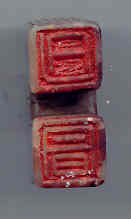Wu Changshuo
On Nov. 29, 1927, Wu Changshuo, a prominent modern seal carver, painter and calligrapher, passed away in Shanghai from a stroke at the age of 83.
He was born in 1844 in Ji'an County, Jiangxi province. Toward the end of the Qing, he served as a magistrate official in Andong (now Lianshui, Jiangsu province) but resigned one month later. Then, he moved to Shanghai and resided there for a long time. He dedicated himself to art and mainly to the painting of flowers after he turned 30. He was influenced by painters such as Xu Wei (Xu Wenchang), Zhu Da (Bada Shanren, or the "Eight Great Mountain Men"), Shi Tao, Zhao Zhiqian from the Ming andQing dynasties, and especially his teacher, contemporary painter Ren Yi.
Combining his seal-engraving skills with painting techniques, he created a vigorous and innovative form of expression. Wu influenced a later trend in painting that belonged to a Chinese artistic movement known as "Hai Pai", or "Shanghai School". His contributions include his flower and fruit paintings, represented by works such as "Red Plum Flower", "Camellia and Narcissus", "Lychee" and "Water Lily".
In 1904, Wu moved to Gushan Mountain beside West Lake in Hangzhou, Zhejiang province, living in seclusion. He then founded the Xiling Seal Carving Society there, with himself as president.



